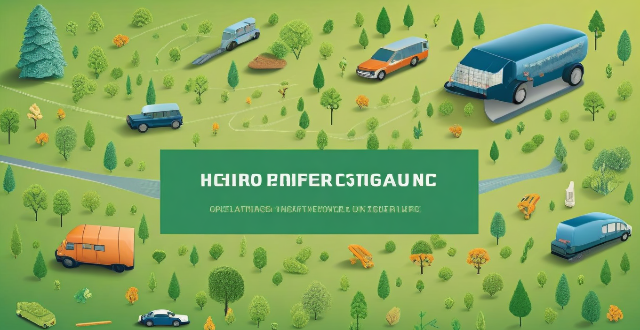The text provides an overview of how climate and environmental policies can be integrated with other policy areas, focusing on transportation, energy, agriculture, and cross-sector collaboration. In transportation, promoting sustainable systems includes investing in public transportation, electric vehicles, and biking/walking paths, while encouraging green commuting habits involves telecommuting and carpooling. In the energy sector, transitioning to renewable sources involves setting standards, offering subsidies, and investing in R&D, while improving efficiency includes stricter building codes and appliance standards. In agriculture, sustainable practices involve organic farming and water management, while reducing methane emissions includes better livestock management and using anaerobic digesters. Cross-sector collaboration emphasizes policy coordination, research and innovation, and financing and investment strategies. The conclusion highlights the importance of a comprehensive approach that combines regulatory measures, financial incentives, educational campaigns, and collaborative efforts for creating a more sustainable future.

Integration of Climate and Environmental Policies with Other Policy Areas
*Transportation*
Promoting Sustainable Transportation Systems:
- Public Transportation Infrastructure: Invest in public transportation systems that reduce the number of vehicles on the road, leading to lower emissions.
- Electric Vehicles: Encourage the adoption of electric vehicles through incentives and infrastructure development like charging stations.
- Biking and Walking Paths: Develop safe and accessible paths for biking and walking to reduce reliance on cars.
Encouraging Green Commuting Habits:
- Telecommuting: Promote remote work options to reduce daily commuting.
- Carpooling: Implement policies that make carpooling more attractive, such as high-occupancy vehicle lanes.
*Energy*
Transitioning to Renewable Energy Sources:
- Renewable Energy Standards: Set targets for renewable energy production and consumption.
- Subsidies and Tax Credits: Offer financial incentives for using solar, wind, hydro, and other renewable sources.
- Research and Development: Invest in technologies that improve the efficiency and affordability of renewable energy.
Improving Energy Efficiency:
- Building Codes: Implement stricter codes for energy efficiency in buildings.
- Appliance Standards: Set standards for appliances to consume less energy.
- Consumer Education: Educate consumers about energy-saving practices at home.
*Agriculture*
Sustainable Farming Practices:
- Organic Farming: Promote organic farming methods that avoid synthetic pesticides and fertilizers.
- Conservation Agriculture: Encourage practices that minimize soil disturbance, maintain soil cover, and diversify crop rotations.
- Water Management: Implement water management strategies to prevent overuse and pollution.
Reducing Methane Emissions:
- Livestock Management: Improve livestock management practices to reduce methane emissions from animals.
- Anaerobic Digesters: Use anaerobic digesters to capture methane from manure and use it as a source of energy.
*Cross-Sector Collaboration*
Policy Coordination:
- Integrated Planning: Plan across sectors to ensure coherence between policies.
- Stakeholder Involvement: Include stakeholders from different sectors in policy discussions.
Research and Innovation:
- Interdisciplinary Research: Encourage research that spans multiple sectors to find innovative solutions.
- Technology Transfer: Facilitate the transfer of technologies developed in one sector to another.
Financing and Investment:
- Green Bonds: Issue green bonds specifically for projects that align with climate goals across sectors.
- Public-Private Partnerships: Create partnerships that leverage private sector expertise and public sector resources for sustainable projects.
*Conclusion*
Integrating climate and environmental policies with transportation, energy, agriculture, and other sectors requires a comprehensive approach that includes regulatory measures, financial incentives, educational campaigns, and collaborative efforts. By adopting such an integrative strategy, we can create a more sustainable future where economic growth is decoupled from environmental degradation.